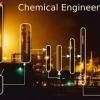Dear Experts,
Can a storage tank designed as atmospheric tank be converted to nitrogen blanketed storage tank ?
Example,
Tank type = Fixed cone roof tank.
Storage = Crude oil,
Capacity = 5000 m3 (including cone roof)
Operating press. / Temp. = atmospheric, / 65°C.
Design press. / Temp. = ( -0.4 kPag to 6 kpag ) / 95°C.
PVRV set pressure = ( 4 kpag / -0.3 kPag )
ERV set pressure = ( 5 kpag )
Maximum inflow rate = 398 m3/h
Maximum outflow rate = 440 m3/h
As a part of a project, it is proposed to install a vent SAPCV in existing open vent line. & one spare nozzle is converted as nitrogen inlet nozzle with a SAPCV installed in that inlet line.
Proposed Nitrogen system pressure = 6 barg / 25°C.
Nitrogen requirement in one tank = 590 Nm3/h
Nitrogen package flow rate = 1140 Nm3/h.
(calculated based on API 2000 - Annexure H)
![]() N2 requirement.xlsx 21.94KB
101 downloads
N2 requirement.xlsx 21.94KB
101 downloads
Will the existing PVRV will be adequate (vendor details are given below) in the event of inlet SAPCV malfunction case. Else, what protection should be checked/given.
Detail of PVRV,
No. of PVRVs = 2 Nos.
Nozzle Size = 6" ,
PVRV set pressure = ( 4 kpag / -0.3 kPag )
Pressure Capacity = 5100 Nm3/h, vaccum capacity = 1050 Nm3/h of air
ERV Capacity = 7100 Nm3/h of air @ set pressure
Edited by varun_svce, 03 November 2014 - 05:53 AM.

 FB
FB













